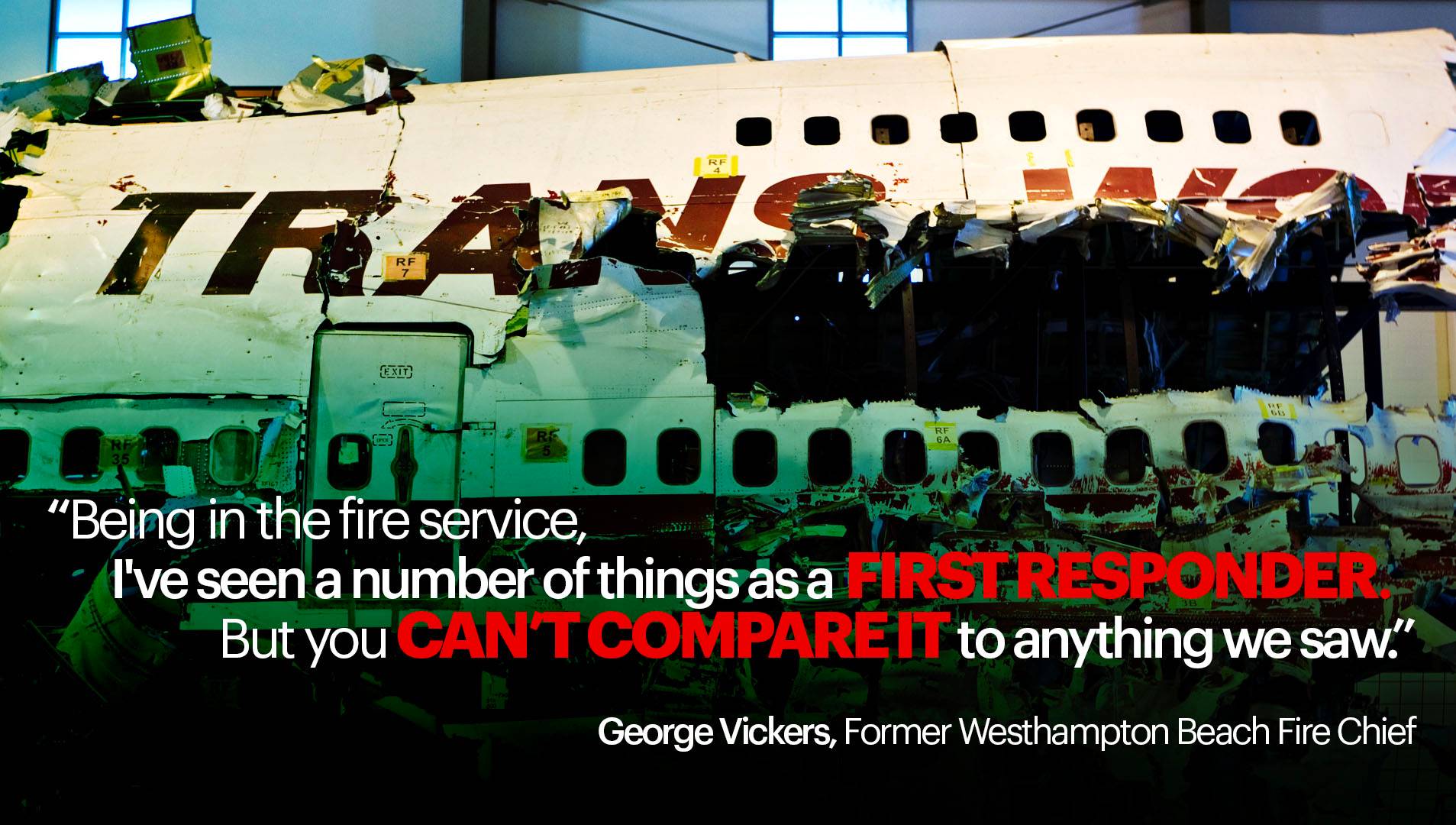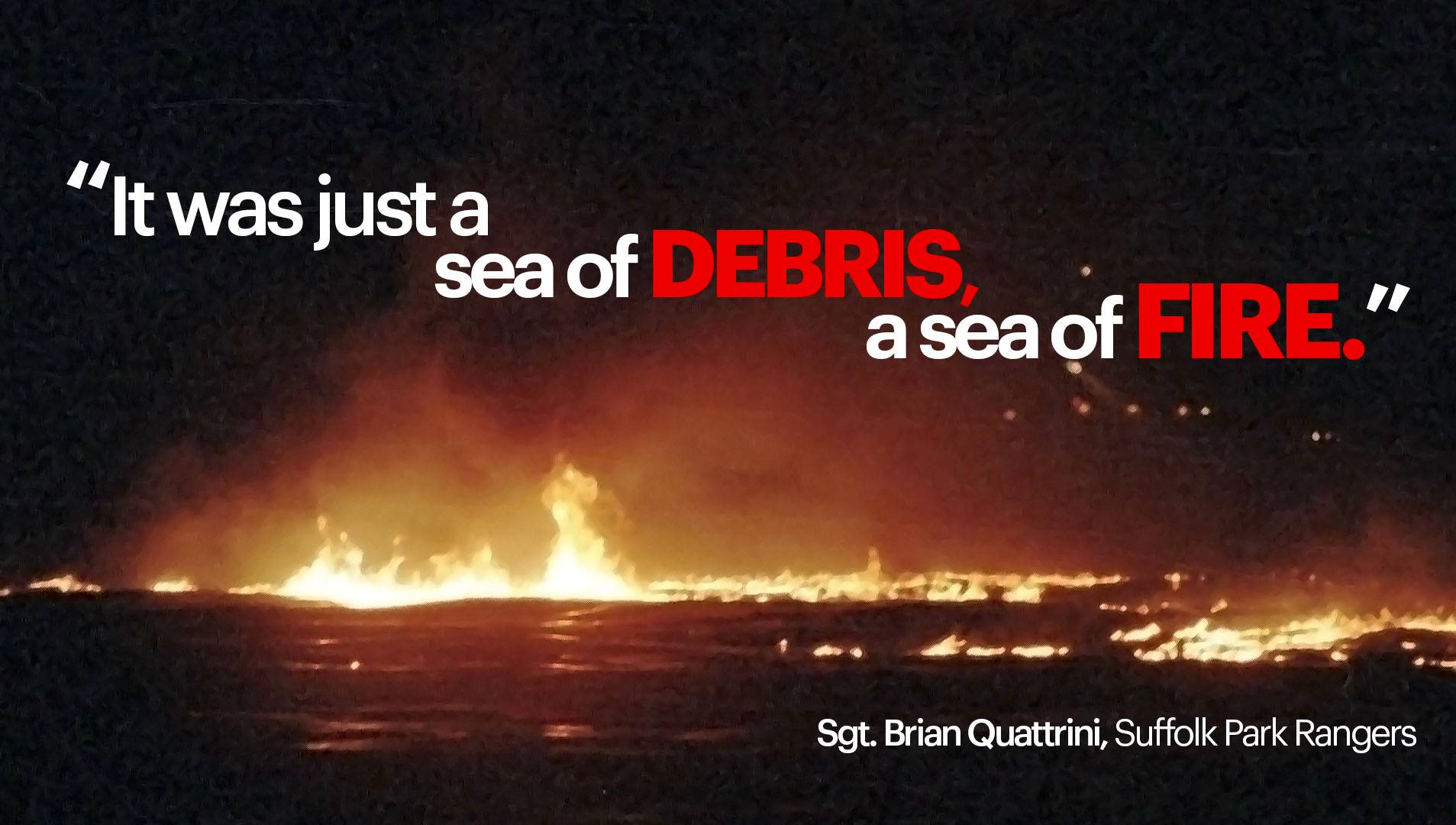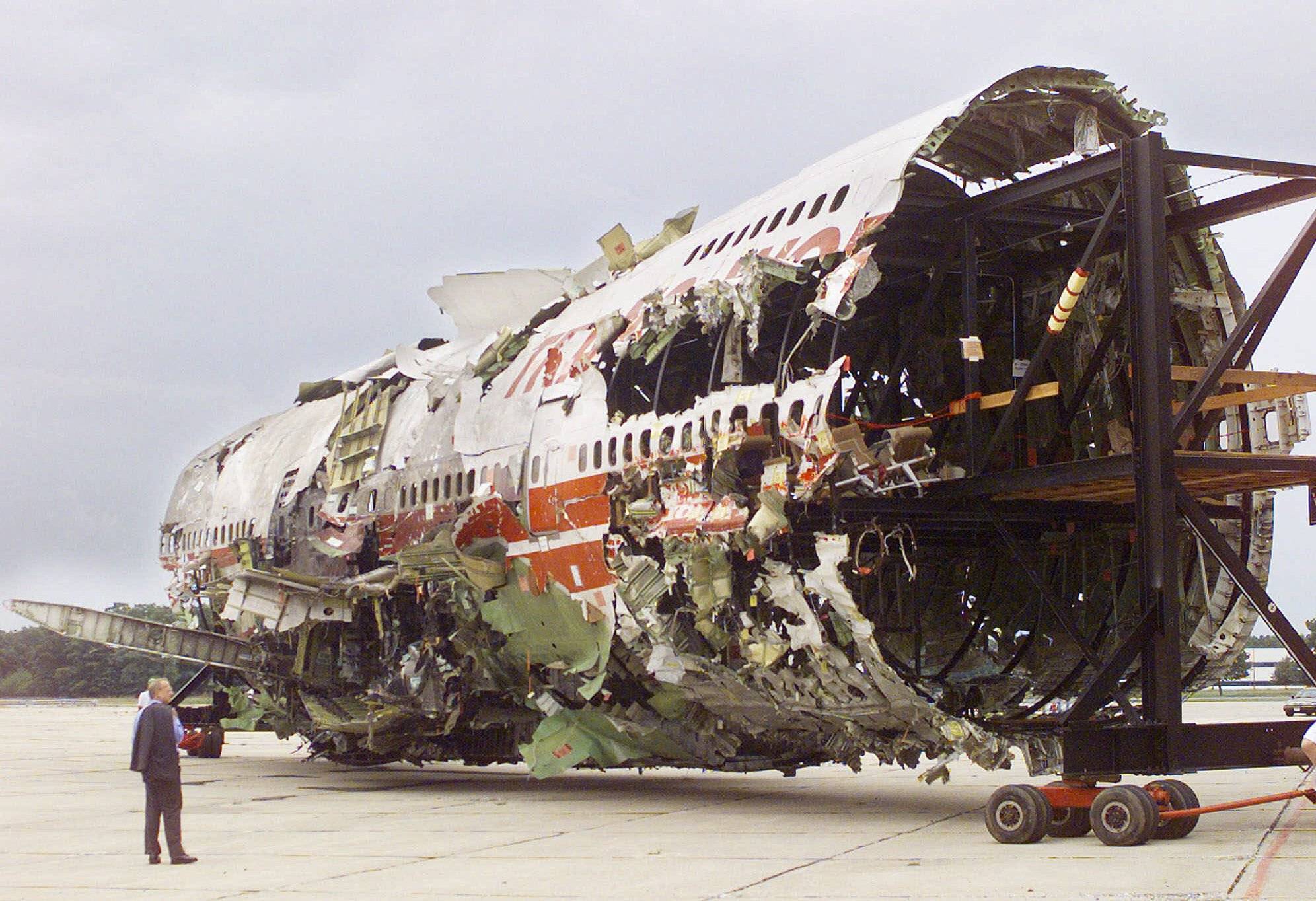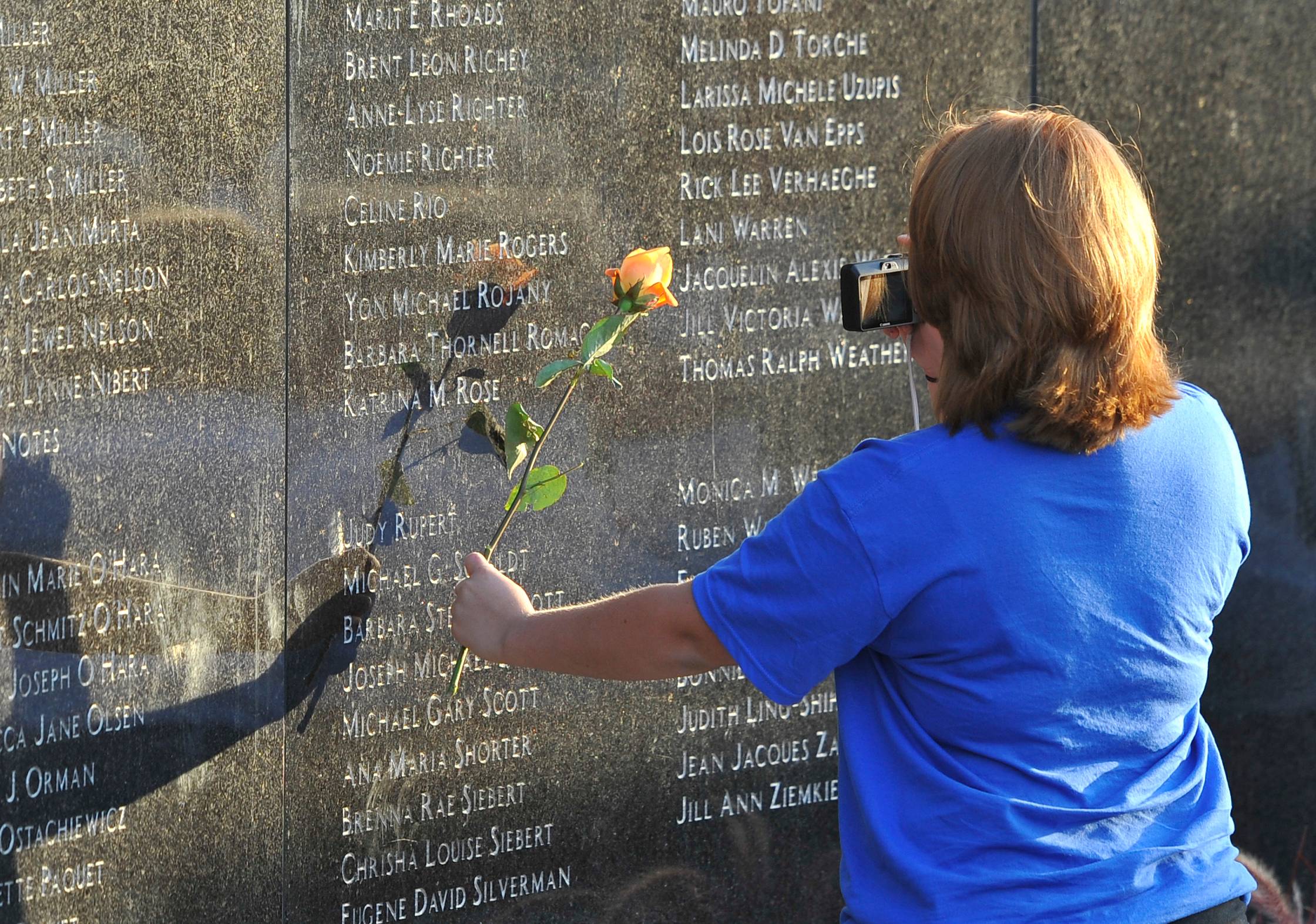

WATCH: TWA Flight 800 - 25 Years Later - Full Documentary
The Explosion
George Vickers, the assistant chief with the Westhampton Beach Fire Department, received an unusual call 25 years ago about a fire on the ocean. At first, he thought it may have been a small plane or boat – but soon learned that the situation was much more catastrophic.
“Being in the fire service, I've seen a number of things as a first responder, but you can't compare it to anything we saw,” he told News 12. “It's beyond words. It's nothing I want to share with particulars.”
TWA Flight 800 took off from John F. Kennedy International Airport at 8:19 p.m. on July 17, 1996. It hugged the South Shore of Long Island as it started what was supposed to be an overnight flight to Paris. Twelve minutes after takeoff, the 747 exploded south of Moriches Inlet. At an altitude of 13,700 feet, the aircraft broke apart and plummeted into the Atlantic Ocean.
All 230 people on board were killed – two pilots, two flight engineers, 14 flight attendants and 212 passengers. Officials believe they died almost instantly when the aircraft exploded.
For nearly four hours, Vickers, his friend John Byrnes and others went through a horrific routine.
“We would come upon a victim and retrieve them out of the water as best we could and then we transport them over to the Suffolk County police boat,” Vickers says.
Byrnes’ brother, Matthew, also helped retrieve bodies that night. He had just graduated college and just accepted a job as a physical therapist in Montoursville, Pennsylvania. Days later it was revealed that the victims included 16 high school students and five chaperones from Montoursville. Although he took the job, it eventually became too emotional.
WATCH: TWA Flight 800 - 25 Years Later, Part 1:
“It was a very difficult six months that he was there, and then [he] transferred to another location,” he said.
Byrnes, Vickers and the others who were there say they rarely talk about what happened. They admit they're occasionally haunted by the experience, but they hope in some small way, they brought comfort to the families of the victims.
“Wish that it never had happened, but I'm glad I did what I did to help,” Byrnes told News 12.
“There was nothing good that came out of that whole operation other than to retrieve bodies for the families. I think we can look back and say we did our part.” said Vickers.

The Recovery & Investigation
WATCH - TWA Fight 800: 25 Years Later Part 2 - The Investigation
READ: NTSB REPORT ON FLIGHT 800
NTSB investigator Frank Hilldrup explained to News 12 what may have happened.
It didn't take investigators long to focus on the plane's center fuel tank. While fuel on commercial planes is carried in the wings, spare fuel, if needed, goes in the center tank. Flight 800 did not need spare fuel.
“There was only residual, about 2 inches of fuel remaining in the center wing tank,” says Hilldrup.
Directly underneath that tank were the plane's air conditioning units. On a hot July evening while sitting on the tarmac at JFK, investigators say the units themselves produced heat. That, in turn, created vapors from the residual fuel in the tank just above them.
Investigators say the final, and catastrophic, piece of the puzzle was what they called "compromised wiring" - high voltage and low voltage wires bundled together, near the tank, that likely caused a short.
“If you don't have a spark of some kind, then you don't have this event. You don't have that kind of explosion,” says Hilldrup.
Though the NTSB report includes that there was “no physical evidence of damage caused by a missile, bomb, or other high-order explosive” – that didn’t stop those who still believe the plane was brought down by an external force.
In 2017, News 12 spoke with Henry Hughes, the senior accident investigator for the NTSB at the crash site. He said that radar traces show pieces of wreckage rocketing away from the jet at three to four times the speed of sound. He also pointed to chemicals found on seats and portions of the fuselage. The government called it glue. He says it was explosive material. Hughes told News 12 that there was no doubt that something hit TWA Flight 800.
"That's an explosion that occurred external to the airplane. And we know that from looking at the victims and the interior," said Hughes.

The Aftermath
The FAA has since mandated changes to avoid any similar explosions from happening again. Changes that would prevent future fuel tank explosions included more inspections for aging aircraft like the Boeing 747, improved wiring to prevent sparks from igniting fumes and a requirement to inject nitrogen gas into fuel tanks to reduce the risk of explosive vapors.
The National Transportation Safety Board recommended 15 changes based on the Flight 800 incident. Some of those were the result of interactions with family members left behind.
“I think what was missing was a real understanding of the family members' perspective,” said Sharon Bryson, the managing director of the NTSB. In 1996, much of her job was dealing with the relatives of accident victims who, at the time, had little in terms of rights.
Even claiming their loved ones' belongings was not a given. They were the property of the airlines. A new federal law changed that in the wake of Flight 800.
“I can't emphasize enough how much their work has changed the way we assist family members,” said Bryson. “Many of the things that we learned from them are being employed around the country to assist victims in other circumstances.”

The end of an era
Since 2003, the wreckage of Flight 800 has been used as an NTSB teaching tool in a hanger in Ashburn, Virginia. Its reconstruction has educated thousands of investigators across all modes of transportation. It includes a 93-foot-long fuselage section, weighing in at around 60,000 pounds and containing 1,600 pieces.
Out of respect to the families, the NTSB put strict limitations on how the wreckage was used over the years. It was never an exhibit or put on public display. The NTSB allowed access to the media one last time before it was discontinued as a teaching tool on July 7.
“Advances in investigative techniques such as 3-D scanning and drone imagery, lessen the relevance of the large-scale reconstruction in teaching modern investigative techniques,” the NTSB said in February.
Bryson said in prepared remarks that the “investigation of the crash of TWA Flight 800 is a seminal moment in aviation safety history.”
“From that investigation, we issued safety recommendations that fundamentally changed the way aircraft are designed. The investigation also led to a memorandum of understanding between the FBI and the NTSB regarding investigations of accidents resulting from intentional acts as well as evidence collection and preservation.”
The NTSB is hopeful to begin the decommissioning process this fall. It will be dismantled, transported to another facility where it will be destroyed. The agency noted that “the witnessed destruction of the reconstruction ensures that no piece of the reconstruction can fall into the hands of people seeking to profit from or exploit the reconstruction."

